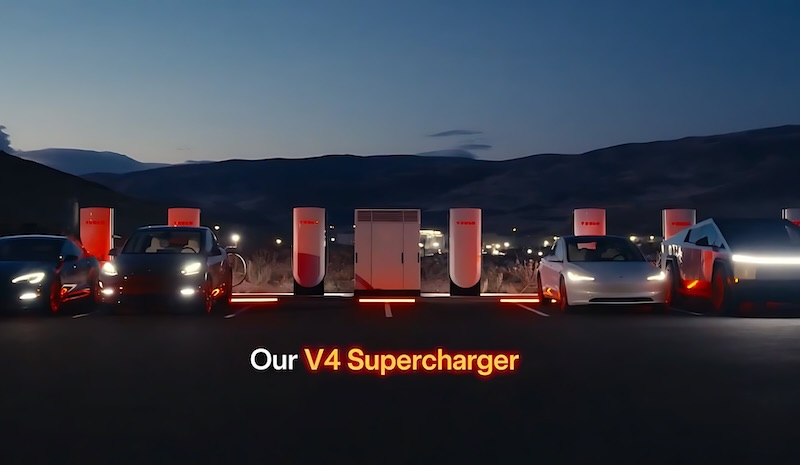Tesla’s upcoming V4 Supercharger network isn’t just another incremental upgrade – it’s poised to fundamentally reshape the economics of EV charging infrastructure. Tesla’s latest charging innovation promises to deliver unprecedented charging speeds while significantly reducing deployment costs.
Tesla’s Director of Supercharging, Max de Zegher, recently unveiled plans for the company’s most powerful charging system yet. The V4 Supercharger, scheduled for deployment in Q3 2025, will push charging capabilities to new heights with 500kW output per port – a substantial leap from current standards.

Tesla V4 Superchargers is aiming to launch its 500kW charging speed Superchargers starting in Q3 2025, bring costs down to below $40k-$45k per charging stall.
What’s particularly striking about Tesla’s next-gen Superchargers isn’t just the raw power output – it’s the economics. Each charging stall comes in at under $40k, representing costs up to 80% lower than competing solutions. This aggressive pricing strategy positions Tesla to accelerate its charging network expansion while maintaining healthy margins.
The system’s architecture reflects Tesla’s characteristic approach to engineering optimization. Each station will feature eight charging ports sharing a combined power output under 1000kW. This design isn’t arbitrary – Tesla’s data suggests it will satisfy peak power requirements for 99% of use cases, striking an optimal balance between capability and cost.
At $40k-$45k per stall in the US market, Tesla’s achieving what many thought impossible – making high-power charging infrastructure economically viable at scale. This breakthrough could accelerate EV adoption by addressing one of the industry’s most persistent challenges: charging infrastructure costs.
Related Post
Tesla V4 Supercharger Launch in China Coming Soon, Offering Compatibility with 3-Party EVs
Tesla Battery Heating for V3 and V4 Superchargers Cold Weather EV Charging 4X Faster
Tesla V4 Supercharger: Revolutionary 500kW and 1.2MW for Semi Charging Coming in 2025
